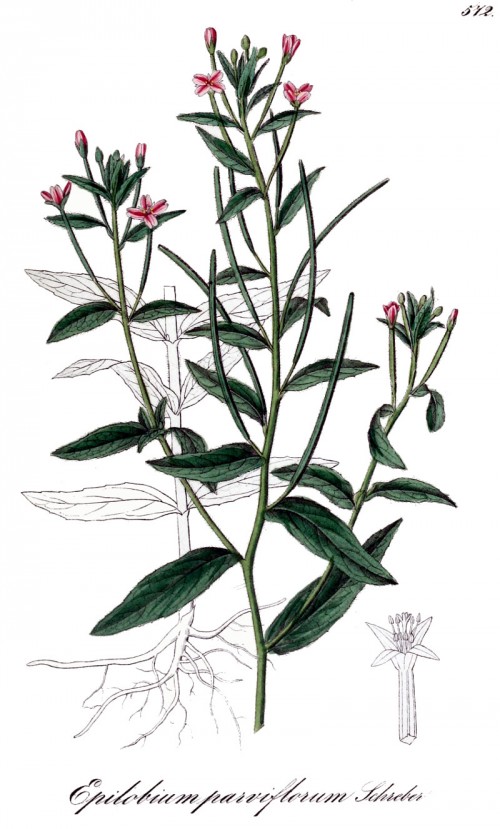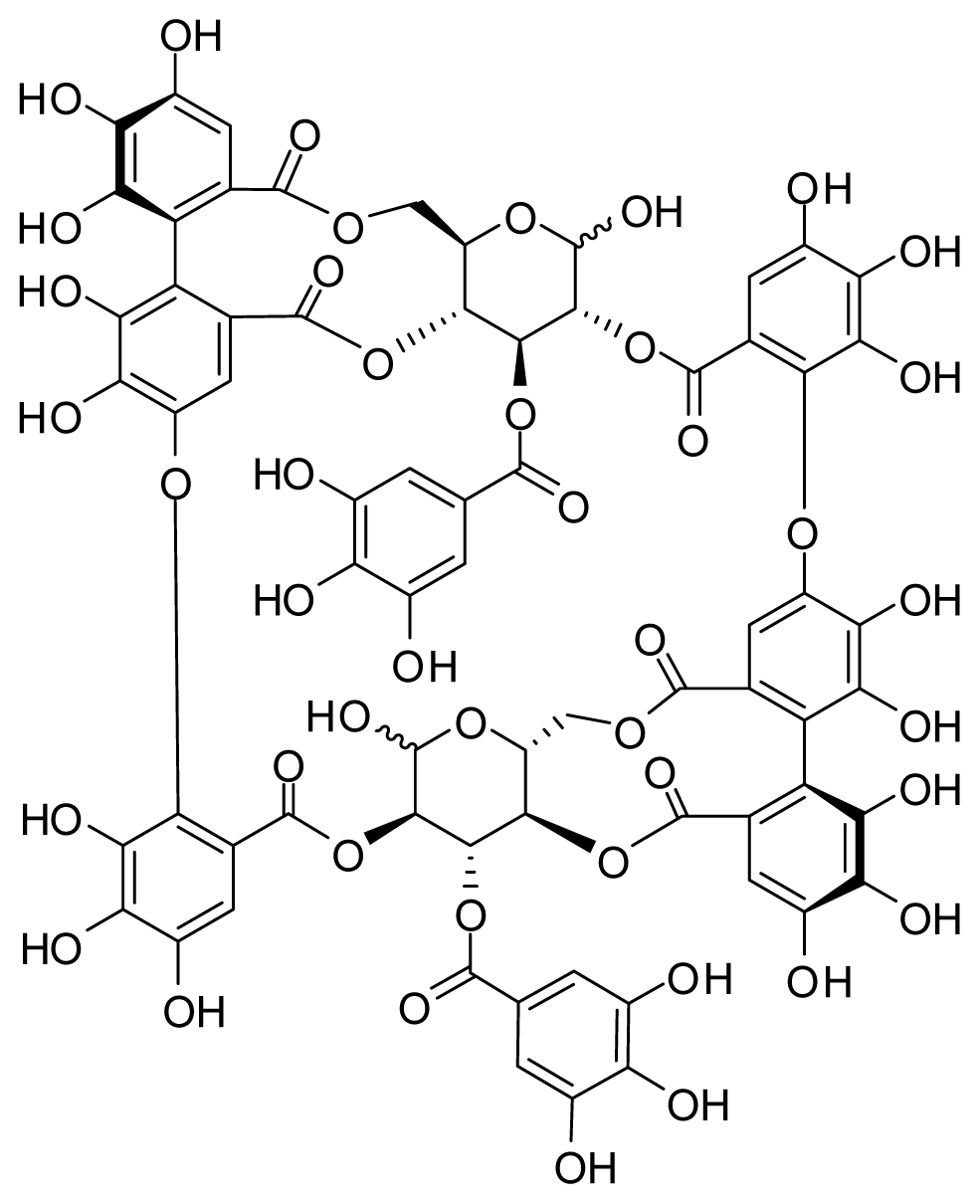Benutzer-Werkzeuge
Epilobium parviflorum Schreb. - Onagraceae - hoary willowherb, small-flower willowherb, Kleinblütiges Weidenröschen
Perennial herb, up to 1m tall, native to Europe and Asia, naturalized in Northern America; stems well-branched above, densely gray villous on lower part, mixed above with short glandular hairs; leaves lanceolate-elliptic to narrowly lanceolate or oblong-lanceolate, both surfaces villous; flowers bright pink to dark purple; capsules 3-7cm long, pubescent or rarely glabrescent; seeds dark brown, 0.8-1.1mm, coarsely papillose. http://www.efloras.org/florataxon.aspx?flora_id=2&taxon_id=200015087
The aboveground parts of the flowering and fruiting plant (Epilobii herba) are used traditionally in case of urinary problems, specifically complaints resulting from benign prostate hypertrophy. There are phytosterols (up to 0.55%) present like β-sitosterol and derivatives, which „… may be responsible for the benefits in prostatitis as they can inhibit aromatase, 5α-reductase and the binding of dihydrotestosterone within the prostate… No scientific support is yet available for the traditional use, but the herb (especially myricetin-3-O-β-D-glucuronide) is known to inhibit prostaglandin formation that would expalin its antiphlogistic activity.“
[Medicinal Plants of the World. Ben-Erik Van Wyk and Michael Wink, Pretoria 2004, 135]
„The ethanolic extract of Epilobium parviflorum showed inhibitory effects on both the COX-1 and COX-2 catalysed prostaglandin biosynthesis, inhibited growth of Escherichia coli and exerted antioxidant activity. Although these results support the traditional use of Epilobium parviflorum for treatment of prostatitis and BPH, further investigation is required…“
[Studies on antibacterial, anti-inflammatory and antioxidant activity of herbal remedies used in the treatment of benign prostatic hyperplasia and prostatitis., Steenkamp, V., Gouws, M.C., Gulumian, M., Elgorashi, E.E., Van Staden, J., Journal of ethnopharmacology, 103(1), 2006, 71-75]
„Willow herb tea or preparation are available and relatively popular in the European market, and claimed to be effective inter alia because of their anti-inflammatory activity. The present study is therefore aimed at comparing the anti-inflammatory and antioxidant activity of extracts of the three most popular Epilobium species (E. angustifolium, E. hirsutum and E. parviflorum) and at juxtaposing this activity against the dominating compounds from the following extracts: oenothein B (OeB), quercetin-3-O-glucuronide and myricetin-3-O-rhamnoside. The phytochemical analysis of the extracts has shown that OeB quantities vary between 20% and 35%, while flavonoids content does not exceed 2%. All extracts have inhibited the activity of hyaluronidase and lipoxygenase with IC50 around 5 μg/ml and 25 μg/ml. The inhibition of hyaluronidase is related with the presence of OeB, a strong inhibitor of this enzyme (IC50 1.1 μM). Additionally, the extracts inhibited myeloperoxidase (MPO) release from stimulated neutrophils. OeB inhibited MPO release similarly to the anti-inflammatory drug indomethacin with IC50 7.7 μM and 15.4 μM, respectively. Tested extracts significantly reduced the production of reactive oxygen species (ROS) from f-MLP and PMA induced neutrophils with IC50 5 μg/ml and 25 μg/ml, respectively. The flavonoids content seems to exert little influence on extracts’ activity, contrary to OeB, whose high concentration explains the activity of extract obtained from Epilobium. Tested currently marketed Epilobium preparations are often wrongly assigned, but we should stress that the level of OeB in all tested herbs was high and always exceeded 2% in raw material…
E.angustifolium contains quercetin-3-O-glucuronide as a main flavonoid, while E.hirsutum and E.parviflorum
contain myricetin-3-O-rhamnoside and higher than E.angustifolium oenothein B quantity. None of the tested extracts at the concentration of 3.125-50 µg/ml has shown cytotoxicity, when tested on human skin fibroblast cells.“
[Oenothein B's contribution to the anti-inflammatory and antioxidant activity of Epilobium sp., Kiss, A. K., Bazylko, A., Filipek, A., Granica, S., Jaszewska, E., Kiarszys, U., Piwowarski, J., Phytomedicine, 18(7), 2011, 557-560]
„…oenothein B enhanced the production of IFNγ by human T cells. Since IFNγ contributes to antitumor, antibacterial, and antiviral cell responses, these data suggest an additional mechanism that could account, at least in part, for the immune enhancing properties of oenothein B.“
[Oenothein B, a cyclic dimeric ellagitannin isolated from Epilobium angustifolium, enhances IFNγ production by lymphocytes., Ramstead, A.G., Schepetkin, I.A., Quinn, M.T., Jutila, M.A., PloS one, 7(11), 2011, e50546-e50546.] http://www.ncbi.nlm.nih.gov/pmc/articles/PMC3511557/
„When oenothein B was administered per os (p.o.), it suppressed (1) LPS-induced abnormal behavior in open field; (2) LPS-induced microglial activation in the hippocampus and striatum; and (3) LPS-induced cyclooxygenase (COX)-2 production in the hippocampus and striatum of these mice. These results suggest that oenothein B had the ability to reduce neuroinflammation in the brain during systemic inflammation.“
[Oenothein B suppresses lipopolysaccharide (LPS)-induced inflammation in the mouse brain., Okuyama, S., Makihata, N., Yoshimura, M., Amakura, Y., Yoshida, T., Nakajima, M., Furukawa, Y., International journal of molecular sciences, 14(5), 2013, 9767-9778] http://www.mdpi.com/1422-0067/14/5/9767/htm

Dietrich, A.G., Flora regni borussici, vol.8, t.572 (1840)
http://plantgenera.org/species.php?id_species=389110

